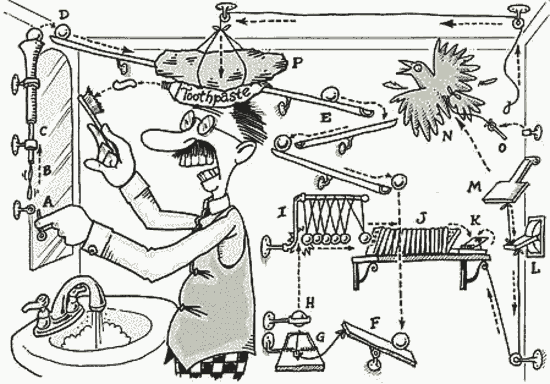Science Seen Physicist and Time One author Colin Gillespie helps you understand your world.
Amazing Space
Cosmology is in a crisis state unprecedented in the history of science.
Daryl Janzen (2014)
Last week’s post looked at two views of space. The tension between them has profound effects on physics that underpins many technologies that affect our lives. Historically, space is seen as either something (often called the æther or ether) or nothing (called the vacuum, though quantum mechanics fills it with particles that are born from borrowed energy and swiftly vanish).
Then in the 1920s Belgian physicist Georges Lemaître predicts and American astronomer Edwin Hubble observes that space, whatever it is, is expanding. Curiously, expanding space soon comes to be identified with Albert Einstein’s 1917 effort to freeze it with a fudge factor. He later tries to purge his fudge but fails. It is now called the cosmological constant, or Λ (lambda). In 1930 Dutch physicist Willem de Sitter says:
The constant Λ, which is a measure of the inherent expanding force of the universe, is still very mysterious, and it is difficult to see what its real meaning is.
At the time cosmology is all speculation. But, to those who speculate, the space that is expanding is called de Sitter space. It contains nothing―neither matter nor radiation―not because space is empty but because Dutch physicist Willem de Sitter assumes it’s empty in order to solve Einstein’s equations. You could say that, for de Sitter, Λ is the universe. Here may lie the origin of ‘nothing expanding’ that so puzzles Marcus Chown (see last week’s post). Let’s call this de Sitter thinking and score one emptily for dS (a label for a piece of our expansion picture).
Cosmology becomes science with the discovery of the Cosmic Microwave Background radiation in 1964. The Big Flash (as I like to call it) picture shows the universe when it was 380,000 years old. Its space is expanding and its matter cooling Big-Bang fashion just as general relativity (GR) predicts. This picture asks more questions than it answers but to see so close to the beginning of the universe is an amazing feat. GR says space was expanding then because . . . well . . . because it was expanding before that; and before that, etcetera, back to when GR breaks down. Of this Sir Arthur Eddington says sadly, ‘This might be true; but it can scarcely be called an explanation…’ Call this Big-Bang thinking. Score one sadly for BB.
In 1998 new evidence shows that the expansion of space is accelerating (now the Planck satellite confirms this more precisely). Science journal calls this ‘weird, space-stretching dark energy.’ Thus this expansion gets a new name, Dark Energy, though what it is is up for grabs. Score one weirdly for DE. (See where we’re going?)
Now two more expansions, hand-in-hand, stretch our imaginations. The first is really first: Space starts from scratch (that is, from an infinitely dense point, though nobody believes this) some 13,820,000,000 years ago (Planck data say) and grows in Quantum-Gravity fashion until, say, 10-36 seconds AtB (After the Beginning). Details may follow when a theory of Quantum Gravity arrives. Score one vaguely for QG.
About 10-36 seconds AtB, QG hands off (most physicists say) to Cosmological Inflation, which is a raft of theories, one of which (there’s no consensus which one) may be validated by the recent observation of gravitational waves, two  Science writers say. But not so fast! A leading proponent of CI, American physicist Paul Steinhardt, now says all CI theories are in trouble. Truth or fiction, around 10-33 seconds AtB CI hands off (well, it must; although its own math says it doesn’t) to the Big Bang. Score one troublingly for CI.
Science writers say. But not so fast! A leading proponent of CI, American physicist Paul Steinhardt, now says all CI theories are in trouble. Truth or fiction, around 10-33 seconds AtB CI hands off (well, it must; although its own math says it doesn’t) to the Big Bang. Score one troublingly for CI.
The scoreboard reads LABELS 5 : EXPLANATIONS 0. It’s a crazy picture. It would be nice to know why space expands. Though its speed varies, surely this should be straightforward. Instead we’ve got a baffling contraption like a Rube Goldberg machine . . . and it doesn’t work.
Coming: Does this sound like something Janzen said?
Sources:
Daryl Janzen (2014), “Einstein’s Cosmological Considerations”, Ithaca: Cornell University Library, http://arxiv.org/pdf/1402.3212v1
Willem de Sitter (1930) “On the Distances and Radial Velocities of Extra-Galactic Nebulae, and the Explanation of the Latter by the Relativity Theory of Inertia”, Proceedings of the National Academy of Science, vol. 16, p. 474; http://www.ncbi.nlm.nih.gov/pmc/articles/PMC526673/
Sir Arthur Eddington (1933), The Expanding Universe, Cambridge: Cambridge University Press, p. 32; http://books.google.ca/books/about/The_Expanding_Universe.html?id=KHyV4-2EyrUC&redir_esc=y
Adrian Cho & Yudhijit Bhattarjee (2014), “First Wrinkles in Spacetime Confirm Cosmic Inflation”, Washington: Science, vol. 343, p. 1296, 21 March; http://www.sciencemag.org/content/343/6177/1296.full
Anna Ijjes, Paul Steinhardt & Abraham Loeb (2014), “Inflationary schism after Planck2013”, Ithaca: Cornell University Library, http://arxiv.org/abs/1402.6980
Other viewing:
A real toothpaste-squeezing Rube Goldberg machine, http://www.youtube.com/watch?v=XlTNYU6khGc
An even more elaborate Rube Goldberg machine, http://www.youtube.com/watch?v=H30zTv406Mo
Image credit: Rube Goldberg; from Generational Dynamics, http://www.generationaldynamics.com/pg/xct.gd.e111028b.htm

I believe in the “big drain”. Space is accelerating into a vacuum from a singular point. Black holes are drains (Look in your sink !), and all the matter that enters it must come out somewhere, hence, the big drain !
Michael, the difficulty with your first proposition is that “vacuum” is the particle physicists’ name for what cosmologists call “space”. But a preponderance of physics agrees with your second proposition. In Time One the narrator says, “Each black hole eats matter and it churns out space.” You can see this in context at http://www.timeone.ca/chapters/making-space.pdf. As space physicist David Miller says, “Thus, this concept eliminates the currently accepted need to postulate a previously unimagined and mysterious dark energy to explain the acceleration of the expansion.” – http://dwightmurphey-collectedwritings.info/JSPES-TimeOne-BkRevArticle%284%29a.htm